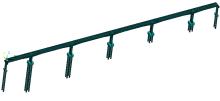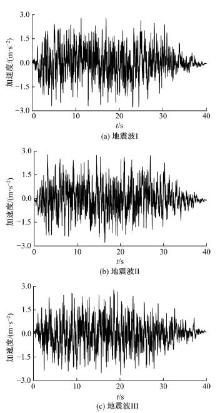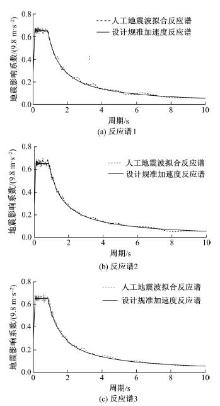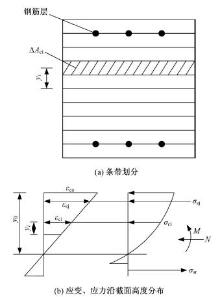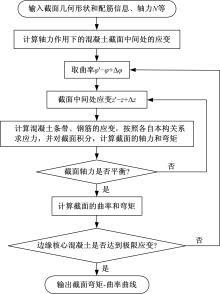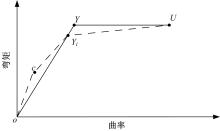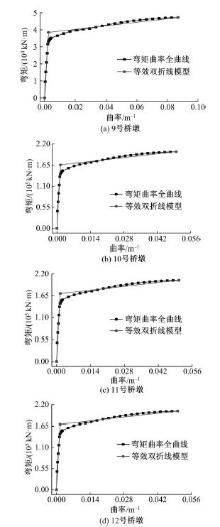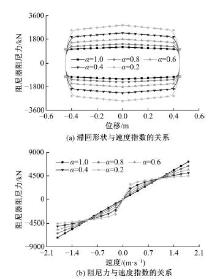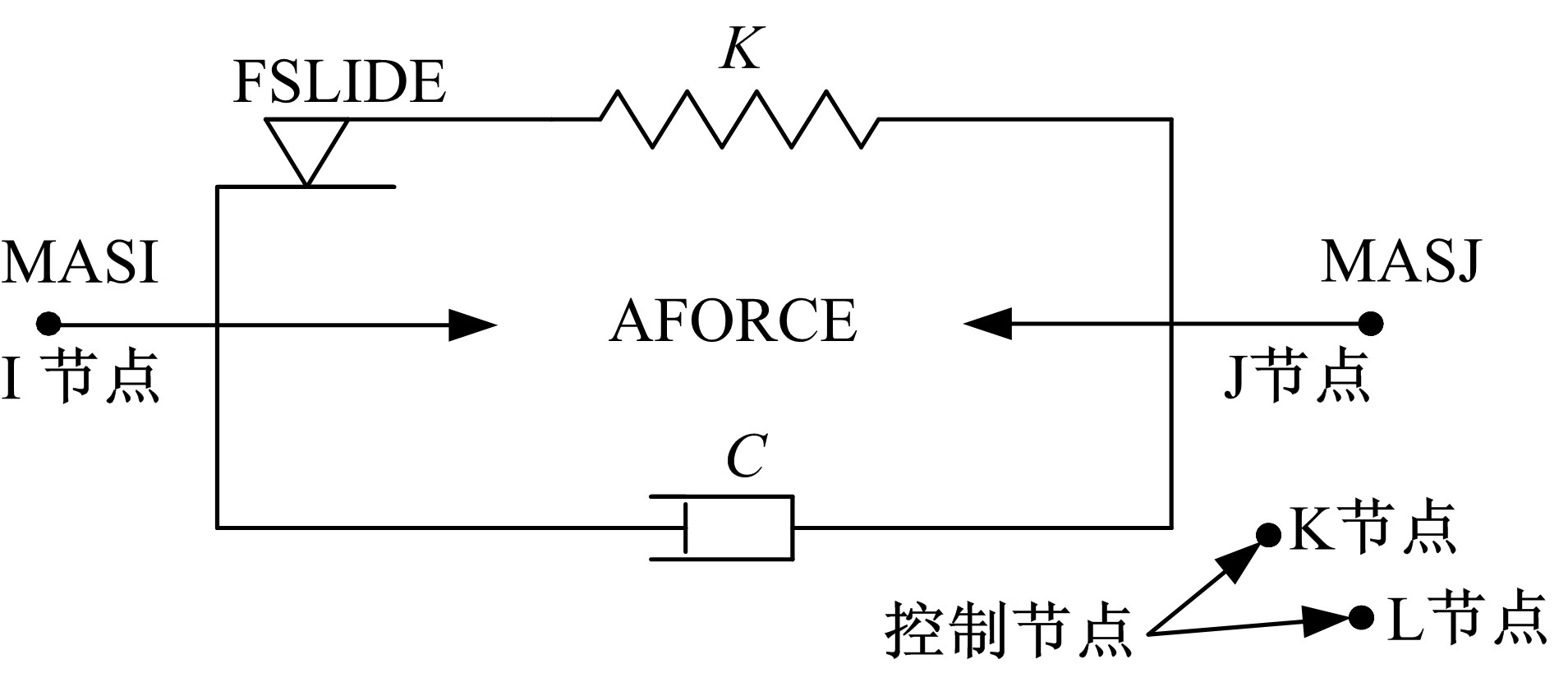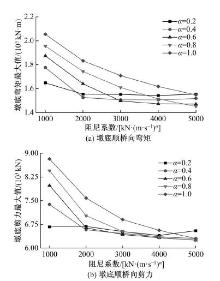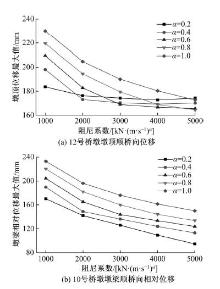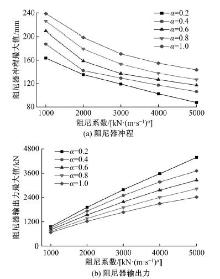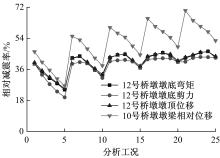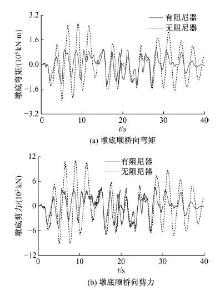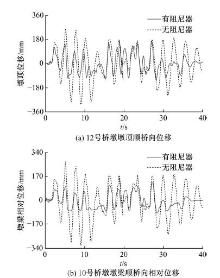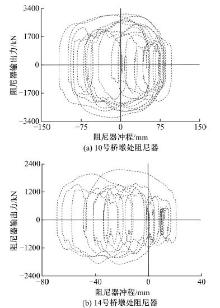| 1 | 王克海 . 桥梁抗震研究[M]. 2版.北京:中国铁道出版社, 2014. | | 2 | 张常勇, 王志英, 王宏博 . 长联大跨连续钢桁梁桥减隔震设计研究[J]. 公路交通科技, 2015, 32(8): 80-88. | | 2 | Zhang Chang-yong , Wang Zhi-ying , Wang Hong-bo . Study on seismic mitigation and isolation design for a long-span continuous steel truss beam bridge[J]. Journal of Highway and Transportation Research and Development, 2015, 32(8): 80-88. | | 3 | 杨喜文, 李建中, 雷昕弋 . 多孔大跨度连续梁桥减隔震技术应用研究[J]. 中国公路学报, 2010, 23(6): 58-65. | | 3 | Yang Xi-wen , Li Jian-zhong , Lei Xin-yi . Research on application of seismic isolation techniques to multiple and large-span continuous girder bridge[J]. China Journal of Highway and Transport, 2010, 23(6): 58-65. | | 4 | Priestly M J N , Seible F , Calvi G M . Seismic design and retrofit of bridges[M]. New York: John Wiley and Sons, 1996: 12-29. | | 5 | 王志强, 胡世德, 范立础 . 东海大桥粘滞阻尼器参数研究[J]. 中国公路学报, 2005, 18(3): 37-42. | | 5 | Wang Zhi-qiang , Hu Shi-de , Fan Li-chu . Research on viscous damper parameters of donghai bridge[J]. China Journal of Highway and Transport, 2005, 18(3): 37-42. | | 6 | Martinez M , Rodrigo M , Romero M L . An optimum retrofit strategy for moment resisting frames with nonlinear viscous dampers for seismic applications[J]. Engineering Structure, 2003, 25(7): 913-925. | | 7 | Pekcan G , Mander J B , Chen S S . Fundamental consideration for the design of nonlinear viscous dampers[J]. Earthquake Engineering & Structural Dynamics, 1999, 28(11): 1405-1425. | | 8 | Lin W H , Anil K C . Earthquake response of elastic SDF systems with non-linear fluid viscous dampers[J]. Earthquake Engineering & Structural Dynamics, 2002, 31(9): 1623-1642. | | 9 | Nicos M , Constantinous M C , Dargush G F . Analytical model of viscoelastic fluid dampers[J]. Journal of Structural Engineering, 1993, 119(11): 3310-3325. | | 10 | 张常勇, 王文斌, 姚宗健 . 大跨度斜拉桥顺桥向阻尼约束体系研究[J]. 桥梁建设, 2014, 44(6): 75-80. | | 10 | Zhang Chang-yong , Wang Wen-bin , Yao Zong-jian . Study of longitudinal damping restraint systems for a long span cable-stayed bridge[J]. Bridge Construction, 2014, 44(6): 75-80. | | 11 | 丁幼亮, 耿方方, 葛文浩,等 . 多塔斜拉桥风致抖振响应的粘滞阻尼器控制研究[J]. 工程力学, 2015, 32(4): 130-137. | | 11 | Ding You-liang , Geng Fang-fang , Ge Wen-hao , et al . Control of wind-induced buffeting responses of a multi-tower cable-stayed bridge using viscous dampers[J]. Engineering Mechanics, 2015, 32(4): 130-137. | | 12 | 刘俊 . 高烈度区多跨刚构连续梁桥减隔震设计研究[J]. 铁道工程学报, 2013, 30(5): 40-46. | | 12 | Liu Jun . Research on seismic isolation design of multi-span rigid frame-continuous girder bridge in high seismic intensity area[J]. Journal of Railway Engineering Society, 2013, 30(5): 40-46. | | 13 | 王波, 马长飞, 刘鹏飞,等 . 基于随机地震响应的斜拉桥粘滞阻尼器参数优化[J]. 桥梁建设, 2016, 46(3): 17-22. | | 13 | Wang Bo , Ma Chang-fei , Liu Peng-fei , et al . Parameter optimization of viscous damper for cable-stayed bridge based on stochastic seismic responses[J]. Bridge Construction, 2016, 46(3): 17-22. | | 14 | 张文学, 黄荐, 王景景 . 斜拉桥面相对高度对粘滞阻尼器减震效果影响研究 [J]. 振动与冲击, 2015, 34(16): 43-47. | | 14 | Zhang Wen-xue , Huang Jian , Wang Jing-jing . Effect of cable-stayed bridge’s relative height of deck on viscous damper’s seismic reduction behavior [J]. Journal of Vibration and Shock, 2015, 34(16): 43-47. | | 15 | 焦驰宇, 孙广龙, 陈永祁,等 . 液体粘滞阻尼器在市政桥梁抗震加固中的应用[J]. 工程力学, 2014, 31(增刊1): 177-181. | | 15 | Jiao Chi-yu , Sun Guang-long , Chen Yong-qi , et al . Application of fluid viscous damper to seismic strengthening of municipal bridges[J]. Engineering Mechanics, 2014, 31(Sup.1): 177-181. | | 16 | 毛玉东, 李建中 . 大跨连续梁桥纵向减震机理和减震效果分析[J]. 同济大学学报:自然科学版, 2016, 44(2): 185-191. | | 16 | Mao Yu-dong , Li jian-zhong . Analysis of seismic mitigation mechanism and effect on longitudinal direction of long-span continuous bridges[J]. Journal of Tongji University (Natural Science), 2016, 44(2): 185-191. | | 17 | 贾毅, 赵人达, 廖平, 等 . 高烈度地区多跨长联连续梁桥抗震体系研究[J]. 桥梁建设, 2017, 47(5): 41-46. | | 17 | Jia Yi , Zhao Ren-da , Liao Ping , et al . Research on seismic system for multi-span and long-unit continuous girder bridge in high intensity region [J]. Bridge Construction, 2017, 47(5): 41-46. | | 18 | 恵迎新, 毛明杰, 刘海峰, 等 . 跨断层桥梁结构地震响应影响[J]. 吉林大学学报:工学版, 2018, 48(6): 1725-1734. | | 18 | Hui Ying-xin , Mao Ming-jie , Liu Hai-feng , et al . Influence of structural seismic response of bridges crossing active fault [J]. Journal of Jinlin University (Engineering and Technology Edition), 2018, 48(6): 1725-1734. | | 19 | 谢肖礼, 王波, 张伟峰, 等 . 罕遇地震作用下高墩连续刚构桥双重非线性抗震分析 [J]. 工程力学, 2009, 26(4): 113-118. | | 19 | Xie Xiao-li , Wang Bo , Zhang Wei-feng , et al . Double nonlinear aseismic analysis of high-rise pier and rigid frame bridges under rear earthquake[J]. Engineering Mechanics, 2009, 26(4): 113-118. | | 20 | 禚一, 王菲 . 罕遇地震下城际铁路连续梁桥延性抗震设计[J]. 铁道工程学报, 2012, 29(4): 66-71,112. | | 20 | Zhuo Yi , Wang Fei . Seismic ductility design for intercity railway continuous bridge under rare earthquake[J]. Journal of Railway Engineering Society, 2012, 29(4): 66-71,112. | | 21 | JTG/T B02-01-2008. 公路桥梁抗震设计细则[S]. | | 22 | 柳春光 . 桥梁结构地震响应与抗震性能分析[M]. 北京:中国建筑工业出版社, 2009. | | 23 | 何杰 . FVD 阻尼系数C和阻尼指数α 对桥梁减震效果影响研究[J]. 公路工程, 2012, 37(6): 89-92,96. | | 23 | He Jie . Analysis of the influence of FVD damping coefficient C and damping exponent α on bridge seismic absorption effect[J]. Highway Engineering, 2012, 37(6): 89-92,96. | | 24 | 葛继平, 王志强 . 干接缝节段拼装桥墩集中塑性铰模型的地震响应分析[J]. 工程力学, 2010, 27(8): 185-190. | | 24 | Ge Ji-ping , Wang Zhi-qiang . Seismic performance studies of segmental bridge columns with match-cast dry joints using concentrated plastic hinge method[J]. Engineering Mechanics, 2010, 27(8): 185-190. | | 25 | 刘怀林, 兰海燕 . Ansys 在大跨径桥梁阻尼器选型中的应用[J]. 公路交通技术, 2011(6): 44-48. | | 25 | Liu Huai-lin , Lan Hai-yan . Application of Ansys in type selection of dampers for large-span bridges[J]. Technology of Highway and Transport, 2011(6): 44-48. | | 26 | 姜浩, 郭学东 . 基于地震激励的混凝土桥梁模态参数识别[J]. 吉林大学学报:工学版, 2011, 41(增刊2): 185-188. | | 26 | Jiang Hao , Guo Xue-dong . Concrete bridge modal parameter identification under seismic excitations[J]. Journal of Jinlin University (Engineering and Technology Edition), 2011, 41(Sup.2): 185-188. |
|
 ),Ren-da ZHAO1,Yong-bao WANG1,Fu-hai LI1,2(
),Ren-da ZHAO1,Yong-bao WANG1,Fu-hai LI1,2( )
)


